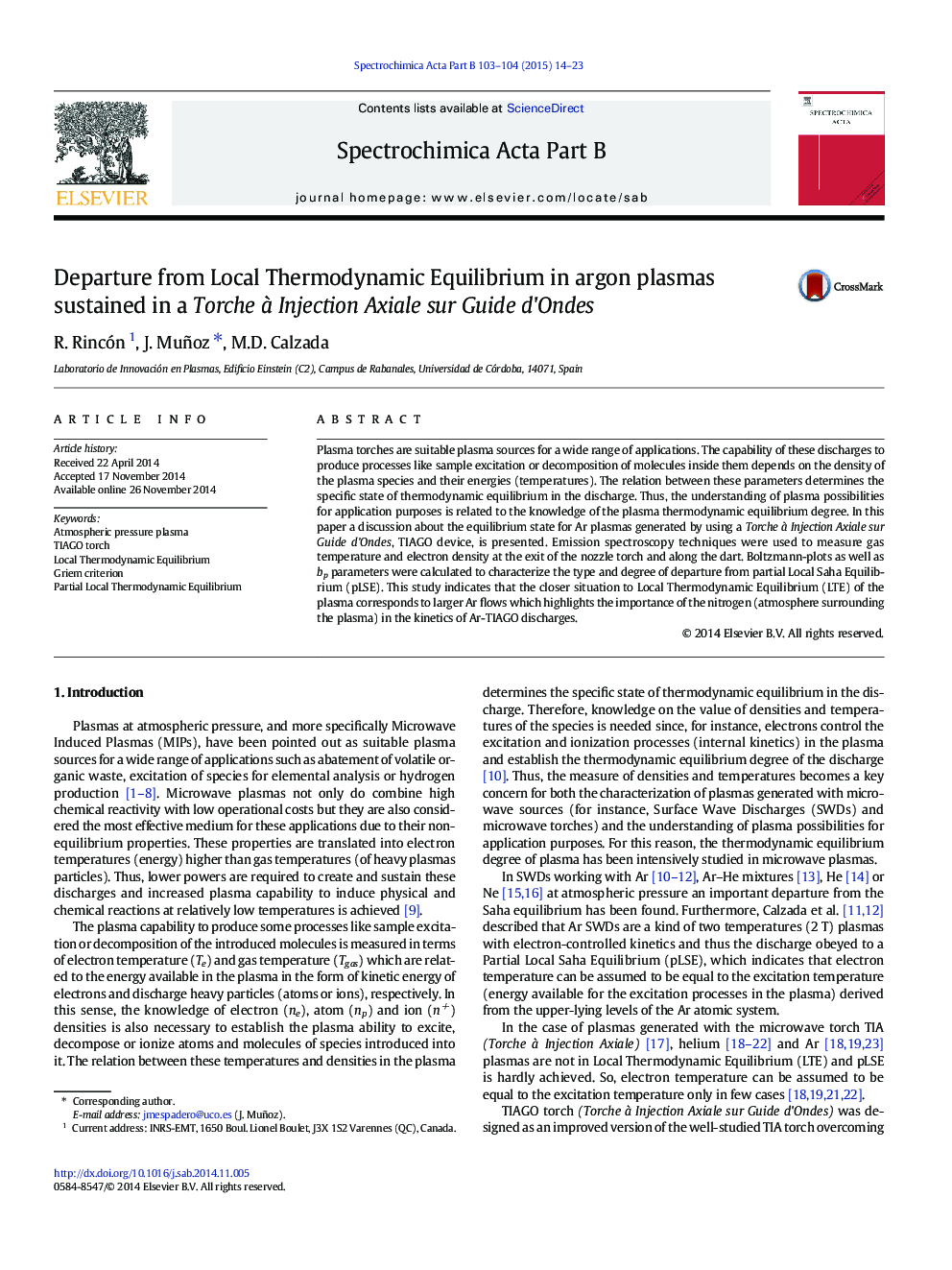| Article ID | Journal | Published Year | Pages | File Type |
|---|---|---|---|---|
| 1240126 | Spectrochimica Acta Part B: Atomic Spectroscopy | 2015 | 10 Pages |
•Discharges sustained in Ar using a TIAGO Torch show a significant departure from Local Thermodynamic Equilibrium.•Nitrogen entrance from surrounding air highly influences Thermodynamic Equilibrium.•Departure from LTE has been studied by means of Boltzmann plots and bp parameters.•The discharge is ionizing at the nozzle exit plasma, while along the dart it becomes recombining.
Plasma torches are suitable plasma sources for a wide range of applications. The capability of these discharges to produce processes like sample excitation or decomposition of molecules inside them depends on the density of the plasma species and their energies (temperatures). The relation between these parameters determines the specific state of thermodynamic equilibrium in the discharge. Thus, the understanding of plasma possibilities for application purposes is related to the knowledge of the plasma thermodynamic equilibrium degree. In this paper a discussion about the equilibrium state for Ar plasmas generated by using a Torche à Injection Axiale sur Guide d'Ondes, TIAGO device, is presented. Emission spectroscopy techniques were used to measure gas temperature and electron density at the exit of the nozzle torch and along the dart. Boltzmann-plots as well as bp parameters were calculated to characterize the type and degree of departure from partial Local Saha Equilibrium (pLSE). This study indicates that the closer situation to Local Thermodynamic Equilibrium (LTE) of the plasma corresponds to larger Ar flows which highlights the importance of the nitrogen (atmosphere surrounding the plasma) in the kinetics of Ar-TIAGO discharges.
